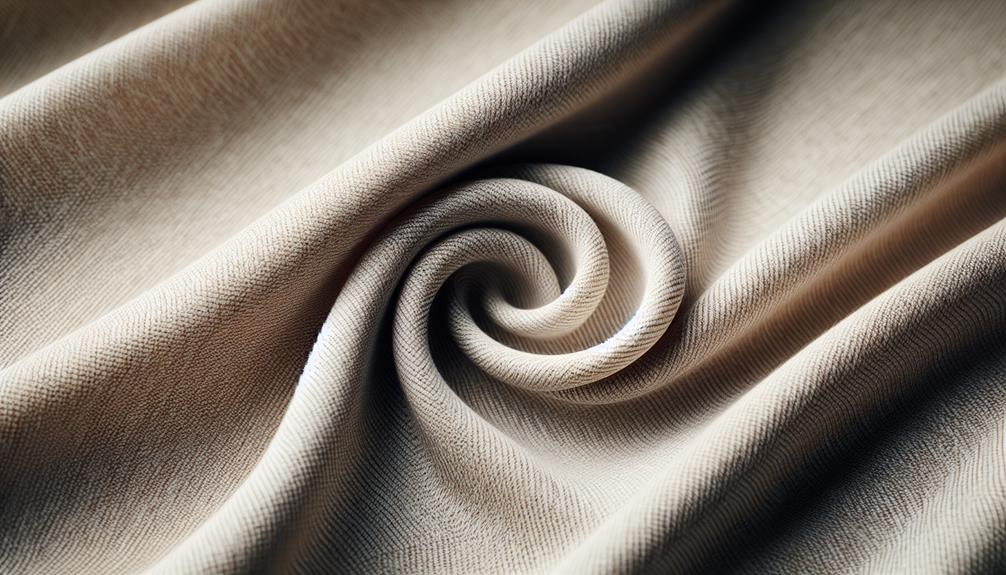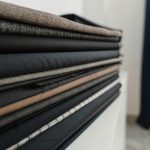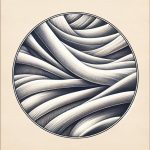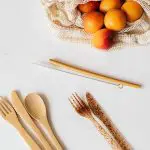As the saying goes, 'you are what you wear,' and understanding fabrics can truly elevate your style. Ever wondered about poplin?
This fabric holds a fascinating history and unique characteristics that set it apart from the rest.
Let's unravel the secrets of poplin and uncover why it has become a staple in the world of fashion.
Table of Contents
Key Takeaways
- Poplin is a versatile plain weave fabric with fine horizontal ribs.
- Originally made with silk and wool, modern poplin is mostly 100% cotton.
- Known for its strong yet crisp texture, silky surface, and subtle sheen.
- Poplin is used in shirts, dresses, sportswear, upholstery, military uniforms, and more.
Definition of Poplin
Poplin, a versatile plain weave fabric with fine horizontal ribs, is renowned for its strength and crisp texture. Originally crafted with silk warp and wool weft yarns, modern poplin is predominantly composed of 100% cotton. This cotton poplin is a go-to choice for many garment types, including shirts, dresses, sportswear, and raincoats due to its adaptability. Its plain weave structure contributes to its durability, making it resistant to tearing and wear.
The versatility of cotton poplin lies in its ability to be both lightweight and sturdy, a rare combination in the fabric world. The fabric's fine horizontal ribs give it a unique visual appeal, adding depth to the texture while maintaining a smooth finish. This plain weave fabric offers a crisp hand feel, often preferred for tailored garments that require a more structured look.
Poplin Fabric Characteristics
With its distinctive fine horizontal ribs and strong yet crisp texture, this plain weave cotton fabric, known as poplin, boasts a silky, lustrous surface that's highly favored in a variety of clothing applications. Poplin is created by weaving fine warp yarns tightly together, resulting in a dense, durable fabric that's both breathable and luxurious. One of its defining characteristics is the subtle sheen that adds a touch of elegance to garments made from this material.
Poplin's unique combination of strength and softness makes it a popular choice for a wide range of clothing items, including shirts, dresses, sportswear, and raincoats. The fabric's versatility and ability to hold its shape well make it ideal for tailored pieces that require structure and polish. Additionally, poplin's easy maintenance and natural wrinkle resistance ensure that garments retain their crisp appearance with minimal effort, often requiring just a light steam or low tumble dry to smooth out any creases.
Its beauty, drape, and year-round wearability have cemented poplin's status as a timeless favorite in both men's and women's fashion.
Poplin Fabric History
Moving from the discussion of Poplin Fabric Characteristics, it's intriguing to explore the rich history behind the creation and evolution of poplin fabric. Poplin has its origins in Avignon, France, dating back to the 15th century. The fabric's name may have been inspired by the papal residence in Avignon, or it could have ties to Poperinge in Flanders. The etymology of poplin also includes the French term 'papeline.' Initially, poplin was crafted from silk yarn, but over time, it transitioned to being predominantly made from cotton.
Poplin is known for its unique weave, which involves a combination of weft and warp threads. This weaving technique results in a fabric with a distinctive ribbed texture and a smooth, lustrous surface. In the United States, poplin was often referred to as broadcloth, indicating its popularity and versatility. The evolution of poplin from a silk-based fabric to one primarily composed of cotton showcases the adaptability and enduring appeal of this classic textile.
Poplin Vs Other Fabrics
When comparing poplin to other fabrics, its softer and more breathable nature sets it apart. Poplin, typically cotton-made, uses fine warp yarn and thicker weft yarn, resulting in a distinct texture that feels luxurious against the skin. Its crisp and lustrous surface distinguishes it from fabrics like twill and broadcloth, making it a popular choice for various garments. Below is a comparison table highlighting poplin's key features compared to other fabrics:
| Poplin | Other Fabrics |
|---|---|
| Softer and more breathable | Less soft and breathable |
| Uses fine warp and thicker weft yarn | Different yarn structure |
| Crisp and lustrous surface | Varies in surface texture |
| Versatile in shirts, dresses, sportswear | Limited use cases |
| Plain weave structure | Different weave patterns |
Poplin's unique combination of qualities makes it a preferred choice for those seeking comfort, style, and durability in their clothing.
Poplin Fabric Uses
Poplin fabric finds versatile applications in a wide range of products due to its durability, elegance, and stability. Made primarily from cotton, poplin features a distinctive tight weave that contributes to its strength and smooth texture, making it a preferred choice for various items.
In the fashion industry, poplin is commonly used in shirts, dresses, skirts, and jackets, blending comfort with longevity. Its ability to hold intricate details and vibrant colors also makes it a popular option for creating eye-catching garments.
Beyond clothing, poplin extends its utility to upholstery, military uniforms, scarves, aprons, and tote bags, where its robust nature and refined appearance shine. Whether adorning home decor items like cushions, curtains, bed sheets, and tablecloths or serving as a versatile material for arts and crafts projects such as fabric flowers, banners, flags, and doll clothes, poplin proves its adaptability and charm across various domains.
Sewing With Poplin
With its versatile applications in a wide range of products, sewing with poplin offers a rewarding experience due to its forgiving nature and ease of handling. Poplin fabric, known for its thin yet sturdy nature, is a delight to work with thanks to its smooth face and excellent shape retention. When sewing with poplin, it's important to consider the weft and warp threads, ensuring proper alignment for a professional finish. Stiffening the fabric may be necessary before sewing to prevent slipping during the stitching process.
Poplin's forgiving nature makes it a popular choice for embroidery, allowing for intricate designs to be easily executed. Whether you're a beginner or an experienced sewer, working with poplin is simple and straightforward, resulting in beautiful and long-lasting creations. Its versatility and ease of handling make poplin suitable for various sewing projects and crafts, making it a go-to fabric for many sewing enthusiasts.
Printing on Poplin
To achieve vibrant and long-lasting prints on poplin fabric, special printing techniques must be employed. The smooth surface of poplin allows for detailed and sharp prints with precision. When using digital printing on poplin, intricate designs and patterns come to life with clarity.
Screen printing is another popular method for applying bold and durable prints onto poplin fabric. Reactive dyes play a crucial role in printing on poplin, ensuring the colors are vibrant and colorfast over time.
Frequently Asked Questions
What Is Difference Between Cotton and Poplin?
The difference between cotton and poplin lies in their weave structures. Cotton is the raw material, while poplin is a fabric made from it. Poplin's tight weave offers a smooth texture, distinct from other cotton weaves.
What Is Poplin Good For?
Poplin is perfect for crafting lightweight and breathable clothing items like shirts, dresses, and skirts. It's ideal for formal wear too, offering a polished look. Its wrinkle-resistant quality makes it great for travel, requiring minimal ironing.
What Does a Poplin Shirt Feel Like?
Feels like a gentle breeze against my skin, smooth and crisp. The fine weave of a poplin shirt creates a lustrous surface that exudes elegance. Lightweight and breathable, this fabric offers comfort and durability.
Why Is Poplin so Cheap?
Poplin is affordable due to its plain weave, which simplifies production. Cotton, a common and cost-effective fiber, further lowers prices. Mass production in various colors also drives down costs. Poplin's popularity fosters economies of scale, making it budget-friendly.
- The History and Evolution of Chamois Fabric - June 22, 2025
- Chamois Fabric on Wikipedia: What You Need to Know - June 22, 2025
- How to Pronounce Chamois Fabric Correctly - June 22, 2025







